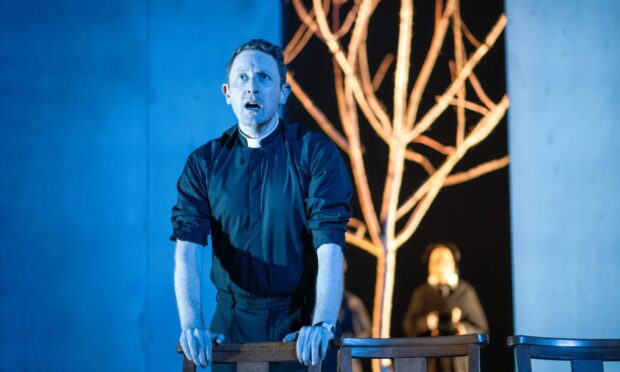Thank you, Rock Family Trees, for the reminder it’s been a whole 30 years since the first flush of Union-flag-swathed, 1990s-conquering guitar noise that was Britpop.
As anyone who was there at the time might recall, that widely-disliked term blanketed a lot of musical sins.
The era is largely summed up in hindsight by Oasis at their most predictable, with a parka-wearing Noel Gallagher brandishing his Union flag guitar.
Girl Power as Brand UK
Or Geri Halliwell of the Spice Girls getting a dress made in the same material and taking to the stage to promote Girl Power and/or Brand UK.
As the singer of one of the better bands of the era (it was Ian Brown of the Stone Roses) was fond of saying, though, “it’s not where you’re from, it’s where you’re at.”
Despite a certain amount of predictable era-specific tropes – the very first words are voice of the ‘90s Sara Cox harking back to “the humdrum climate of John Major’s Britain” – Rock Family Trees: The Birth of Cool Britannia (BBC Two) was about the scene at the very beginning, when it felt raw and interesting and real.
Technically, of course, this one-off music doc is a piece of 1990s revivalism in its own right.
Linking it all up
English music journalist Pete Frame is known for his sculpted text ‘family trees’, which show members of famous bands and how they linked to other groups, past or present.
He published a book of them in 1993, and through the rest of the decade John Peel narrated a dozen episodes for the BBC which animated these trees.
The very nature of the programme, which finds links between related bands, means there’s only one obvious interconnected tale to explore the 1990s through.
The story’s essentially that of the group Suede, formed in West Sussex commuter town Haywards Heath, and steeped in a sense of suburban ennui and the dark, sexualised glamour lurking beneath it.
The group’s founding members Brett Anderson and Matt Osman are interviewed in frank and engaging detail – they refute any link with the flag-waving of Anderson’s famous Select magazine cover – as is their pre-fame guitarist and Brett’s then-girlfriend Justine Frischmann.
The pair’s relationship was the stuff of music press gossip, which leeched into the tabloids when Frischmann began dating Blur’s Damon Albarn instead, around the time his band became very famous.
Then Frischmann became briefly more famous internationally than any of her contemporaries with Elastica.
Cutting narrative corners, but still
It’s nice to be reminded of the best of these three groups’ music, although certain narrative corners are cut.
Pulp and Oasis, at least as influential, have a bit-part role, while commentator Bidisha’s statement that “Suede were the first British band to come along and give voice to a generation that felt unseen and unheard” neatly ignores Manic Street Preachers and Radiohead.
If it feels somewhat lopsided that no-one from Blur is involved, Anderson, Osman, Frischmann and knowledgeable talking heads like Miranda Sawyer and Steve Lamacq tell a vivid story of the times, and young people finding fame, burnout and eventually lasting creative life.
It was good to be reminded of the best of these times and their sound, far removed from the hype and spurious national branding of the day.












